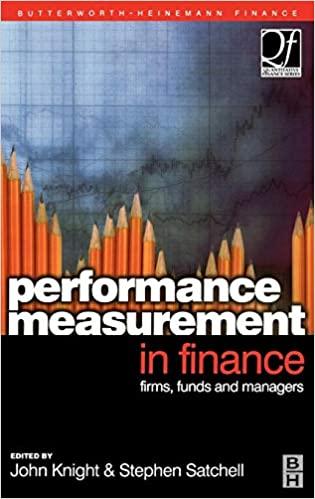Question
Suppose the owner of a boat, on seeing an impending storm blowing up, moored his boat to a dock without first obtaining the owners permission.
Suppose the owner of a boat, on seeing an impending storm blowing up, moored his boat to a dock without first obtaining the owners permission. During the course of the storm, the boat did $500 worth of damages on the dock, but the boat was saved. The dock owner sued for damages and won. What assignment of rights and enforcement rule (property or liability) are implied by this ruling? Would it have made sense for the court instead to award the plaintiff more than the $500 in damages to deter the defendants actions?
2. Miceli, 6.2
3. Consider the railroad and farmer example discussed in class. Assume that the cost of the arrester is $500, the cost of switching to clover is $300 and the damage to the wheat from fires is $700.
a) Assuming that the farmer has the property right, answer the following:
1. What is the total surplus, farmers payoff and railroads payoff if no bargaining is possible?
2. What is the total surplus, farmers payoff and railroads payoff if bargaining is possible?
b) Repeat (a) assuming that the farmer has a liability right.
c) Suppose we use a hybrid system. The farmer doesnt get compensated for any damages, but the railroad is fined (payments are made to the government) by a third-party an amount equal to actual damages. Repeat (a)
4. Consider the rancher and farmer example from class. Suppose that the profit function
for the rancher is given by: RH 400H 2H2, where H is the size of the herd. The
damages caused to the farmer are given by DFH H2 . 2
A. Find the efficient size of the herd. At this size, what is the profit for the rancher? What are damages to the farmer?
B. Suppose that a strict property right is given to the Rancher. In the absence of
bargaining, what is the size of the herd? What are profits? What are damages?
C. Suppose that a strict property right is given to the Farmer. In the absence of bargaining, what is the size of the herd? What are profits? What are damages?
D. Suppose that a liability property right is given to the Farmer.In the absence of bargaining, what is the size of the herd? What are profits? What are damages?
E. Compare the efficiency of part C to part D.
F. Compare the outcome in part D to the Rancher having a strict property right, but must pay a pigouvian tax (a tax to correct an externality) of $80 per cow. Note how each compares to part A.
G. Now, suppose that the Farmer could pay $2000 to build a fence. What is the efficient outcome? Will the scheme in part F achieve this?
H. Thinking about parts B and C, only with the option to build a fence. What would happen if the Rancher and the Farmer negotiated? What are the range of values the rancher might pay the farmer under each rule?
Step by Step Solution
There are 3 Steps involved in it
Step: 1

Get Instant Access to Expert-Tailored Solutions
See step-by-step solutions with expert insights and AI powered tools for academic success
Step: 2

Step: 3

Ace Your Homework with AI
Get the answers you need in no time with our AI-driven, step-by-step assistance
Get Started


